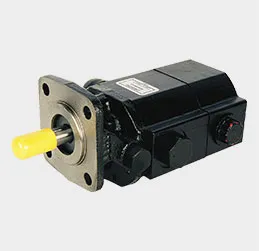Metal Stamping Techniques for Precision Parts Manufacturing and Design Optimization
Understanding Metal Stamping Plates A Comprehensive Overview
Metal stamping plates are an integral component in various industries, including automotive, electronics, aerospace, and machinery manufacturing. These plates serve as the foundation for producing a myriad of metal parts and components through the stamping process. This article aims to provide a detailed insight into metal stamping plates, covering their definitions, applications, manufacturing processes, advantages, and considerations for selecting the right stamping solution.
What are Metal Stamping Plates?
Metal stamping plates are flat sheets of metal that have been cut, shaped, or formed into specific profiles using a metal stamping process. This process involves the use of dies, which are specialized tools designed to mold the metal into desired shapes. The metal used in stamping can range from aluminum, stainless steel, brass, copper, to mild steel, depending on the intended application and required properties.
Applications of Metal Stamping Plates
The applications of metal stamping plates are vast and varied. In the automotive industry, they are crucial for manufacturing parts like brackets, panels, and chassis components. Similarly, in the electronics sector, metal stamping plates are used for producing enclosures, connectors, and other essential electronic parts.
Other industries, such as aerospace, rely on metal stamping plates for manufacturing structural components that require high strength-to-weight ratios. Furthermore, in the appliance manufacturing sector, metal stamping is employed to produce parts for refrigerators, stoves, and washing machines.
The Manufacturing Process of Metal Stamping
The metal stamping process typically involves several stages
1. Design and Prototype The first step is to design the part and create a prototype, which helps in understanding the feasibility of manufacturing the part through stamping.
2. Die Creation Once the design is finalized, custom dies are fabricated based on the specifications. These dies are essential for shaping and cutting the metal.
3. Material Selection Choosing the right type of metal is critical. Various metals have different properties, such as ductility, strength, and resistance to corrosion.
4. Stamping Process The metal sheet is fed into a stamping press where it is subjected to high pressure. The dies then cut or shape the metal into the desired design.
metal stamping plates

Advantages of Metal Stamping
Metal stamping offers several advantages
- Cost-Effectiveness Once the initial investment in dies and tooling is made, the cost per part decreases significantly, making it a cost-effective solution for high-volume production.
- Precision and Repeatability Stamping processes can achieve high precision, ensuring that parts meet exact specifications consistently, which is crucial for industries that demand tight tolerances.
- Material Efficiency The stamping process minimizes waste material, as it allows for intricate designs while utilizing the sheet metal effectively.
- Variety of Finishes Stamped parts can undergo various finishing treatments, making them suitable for aesthetic applications as well as functional ones.
Considerations for Selecting Metal Stamping Plates
When selecting metal stamping plates, several factors need to be considered
1. Material Properties Consider the mechanical properties of the metal, its corrosion resistance, and how it reacts to the stamping process.
2. Design Requirements The complexity of the part's design and its intended use will influence the type of metal and stamping process chosen.
3. Volume Requirements High-volume production may justify investing in custom dies, whereas low-volume needs might be better served with more adaptable solutions.
4. Cost Constraints Evaluate the trade-offs between the initial setup costs and long-term benefits in terms of pricing per unit.
Conclusion
In summary, metal stamping plates play a vital role in the manufacturing landscape, offering efficiency, precision, and versatility across multiple industries. Understanding the intricacies of the stamping process, the materials involved, and the applications can help businesses make informed decisions, leading to improved production outcomes and competitive advantages. Whether for automotive, aerospace, or electronic components, leveraging the benefits of metal stamping is essential in today’s manufacturing environment.
-
OEM Sand Cast Pump Valve Fittings - Baoding Hairun Machinery And Equipment Trading Co., Ltd.NewsAug.01,2025
-
Custom OEM Impellers | High Efficiency & PrecisionNewsAug.01,2025
-
OEM Sand Cast Pump Valve Fittings - Baoding Hairun Machinery | Customization, Quality AssuranceNewsAug.01,2025
-
OEM Sand Cast Pump Valve Fittings - Baoding Hairun Machinery And Equipment Trading Co., Ltd.NewsAug.01,2025
-
OEM Sand Cast Pump Valve Fittings - Baoding Hairun Machinery And Equipment Trading Co., Ltd.NewsJul.31,2025
-
OEM Sand Cast Pump Valve Fittings - Baoding Hairun | Precision Engineering, CustomizableNewsJul.30,2025















